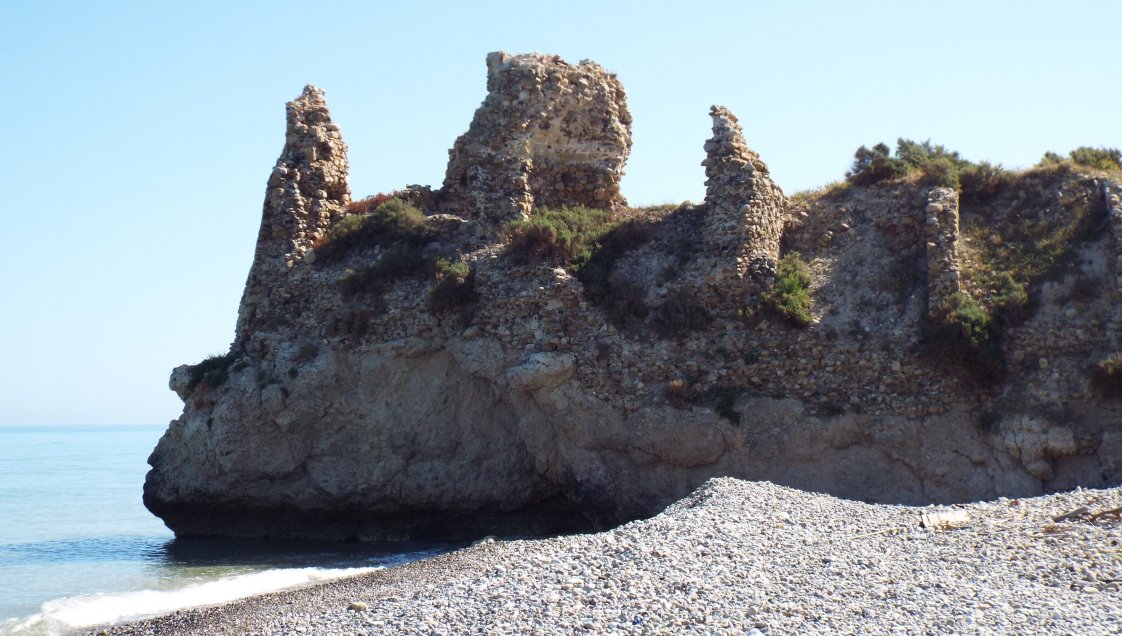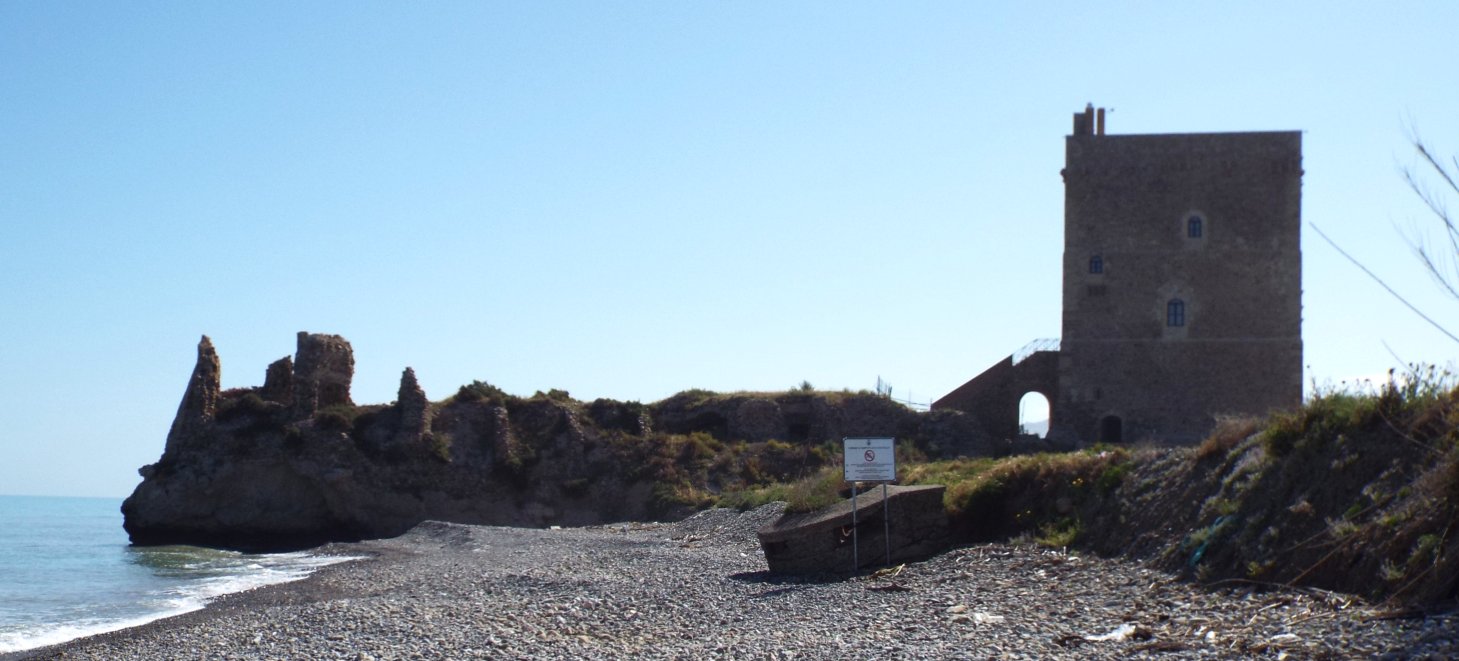Roccella
The castle was first mentioned by the Ararabic name
‘Saharat al Hadid' in the Book of Roger of 1154. As
such it was described as a small village with a fort at the top of
the rock - A ‘little hamlet (picciol casale) with a castle (hisn) at the top of
a cliff, which advances, steep on every side, on the beach of the
sea'. The land of Roccamaris was granted by Roger Hauteville
(d.1101) to the new diocese of Troina in 1082, while a century later in
1194 Rochel
was captured by the Emperor Henry VI's troops when advancing on Palermo
to seize the throne from the young King William III.
One of the Swabian emperors gave the castle to Count Paul Cicala of
Collesano, for, in 1205 he sold Roccella to the bishop of
Cefalu. The bishop in turn sold it to Montevergine monastery in 1218 as
‘the place where Roccella castle stands and he allows a
church dedicated to the Virgin to be built there'. As a
consequence the church of St John, first attested in 1135, was joined
by the church of St Mary, which was in use by 1232.
In 1221 Frederick II (d.1250) confirmed the sale of Roccella with the proviso
that he was allowed to garrison the castle. This suggests that the
castle may have been granted to Count Paul when Frederick was a minor,
ie. between the death of his father Henry VI in 1197 and 1205 when the
castle was in the hands of Count Paul. In 1296 Lord Damian Spatafora held Rocchella.
He was still lord in the late 1320s. This was after the
fortress had briefly been given to Roger Lauria (d.1305) with
Castiglione (Castellionis) in 1299 by King Frederick III (1295-1337).
In 1338 an unsuccessful Angevin invasion landed here. Some 20
years later the castle was acquired by the powerful Ventimiglia
family. After Antonio Ventimiglia (d.1409) was deported to Malta in
1408 the castle was garrisoned by the Crown with 12 serjeants under the
castellan, Peter Claromonte. The weapons reported within the castle
included 2 bombards, 3 crossbows, 12 Pavia and 2 cases of crossbow
bolts. In 1412 Antonio's son, Francesco Ventimiglia (d.1418), was captured by
his step mother, Elvira Moncada and thrown into Roccella castle
prison. However, part of the garrison rebelled and helped him
imprison his mother-in-law and her daughter. After failed
attempts to reclaim the castle Francesco rebelled, his brother Giovanni (d.1473+),
holding Roccella for him. The castle was besieged by royal
troops in 1418 who quickly bombarded the castle into submission when it
became royal property once more. At the end of the sixteenth
century the castle was drawn by Tiburzio Spannocchi and painted by
Camillo Camiliani with a view for using the site as a defence against
the Turks and pirates. The fortress was still manned as an
artillery fort around 1750.
Description
Standing on an outcrop projecting into the sea, only 262' long and
33'-66' wide, stands Roccella castle. Today only a tower
keep, 46'x26' by 65' high, with walls around 8', remains on the south,
landward end of the outcrop. This was of at least 3 storeys,
each divided by a string course. A plinth was added at a
later date. Access was gained to the first floor via external
steps to the north. From here the basement with a barrel
vault is divided into 2 bays by an ogival arch. Underneath is
a cistern. The first floor has Romanesque windows, as does
the second floor, which also has shoulder headed doorways and a fine
inserted brick fireplace in the corner. The coat of arms of
the Ventimiglia family, who acquired the castle shortly before 1358,
can also be found several times in this room. Francesco
Ventimiglia (d.1392) is said to have rebuilt the tower about 1385. A list of similar keeps appears under Cefala Diana.

Why not join me here and at other Sicilian
castles? Information on this and other tours can be found at Scholarly
Sojourns.
Copyright©2019
Paul Martin Remfry


